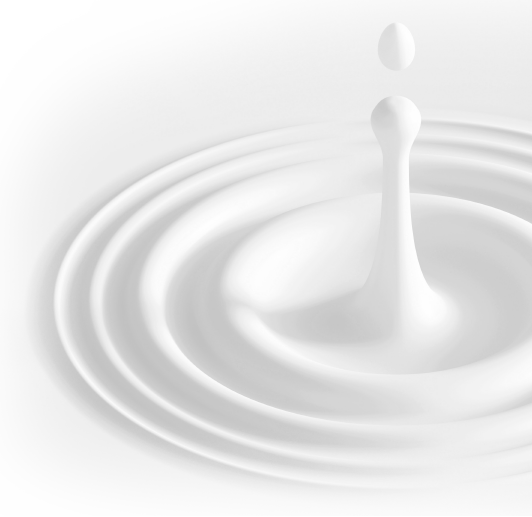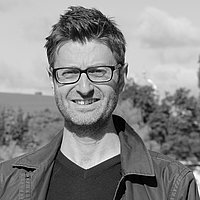Born in Argentina, university studies in France, an experience in the industry in the US and a PhD in Switzerland: The 32 year old physicist Clara Saraceno has literally followed her passion for lasers around the world. Since June, the 2015 Sofja Kovalevskaja Award winner (a prize of the The Alexander Von Humboldt Foundation) has started a W2 tenure track professorship at RUB. In RESOLV she will build the ultrafast lasers that Martina Havenith (speaker of the cluster) will use to investigate the role of water in biological processes. Similar to the lasers she works with, Saraceno is a powerful and resolute scientist. Her driving force, as she tells us in this interview, is fun.
Q: RESOLV is essentially about understanding how water works and why is water the matrix of life. Why exploit lasers in the THz field to study water?
Water shows extremely strong absorption in the THz regime, hence we can apply light sources in that field to investigate water dynamics. For example this could help us follow how water behaves around a protein while the molecule is functioning, making reactions and so on.
Q: How do you want to study water dynamics?
In general, the more short laser pulses you have per second the more information per second you get. Hence, to study fast dynamics we need lasers that deliver very short pulses at very high repetition rate, which means reaching high average power.
Q: How simple is that?
That’s exactly the ongoing challenge in ultrafast laser research! There are several ways to do this: You could pump the power by amplifying a regular ultrafast oscillator output or you can aim for simple compact source by trying to push the oscillator itself. I actually prefer the second option: I could reach an average 275 W power with 600 femtoseconds pulse duration and 17 MHz repetition rate in the near infrared range – a record that I actually achieved in 2012. My challenge here at RUB is to use these sources and convert them into high-power sources into the 1-10 THz range: We would like to reach an average power close to 1 W and a repetition rate bigger than 1 MHz.
Q: What are the main hurdles along the way and how can you overcome them?
Like for every high power, solid-state laser, we would need to minimize heat and maximize cooling, by choosing the right materials and the right geometry. The one geometry that I favor implies a gain medium, the main source of heat, shaped like a pancake. The disks that we use are just a few hundred microns thin, allowing for better dissipation of the heat and better-shaped short pulses.
Q: How do you cool down the discs?
The disks are actually glued on diamonds! They dissipate heat very well. We don’t use the pretty polished ones, just synthetic, but they are still expensive. The diamonds are then water-cooled.
Q: So much for hard science. What led you to work with lasers?
It was during my university studies on optics in France, there was this lecture on lasers technology. It was so cool! And then the school was offering an internship at Coherent, an American laser manufacturing company set in California. I thought: “Sunny California, for one year, lasers are cool, why not?”. But I applied too late.
I contact them anyway after my master for an engineer trainee, and they got me. There I learned everything about lasers and I really got the ultrafast laser bug. It was real fun!
Q: How did it happen that you then went back to academia?
I soon found out that in the laser industry you need a PhD to make interesting things. So I was looking for an opportunity and it happened that my ex boyfriend was in Europe and that my cubicle-colleague at Coherent knew Prof. Ursula Keller at ETH in Zurich, Switzerland. He suggested I should apply there. They wanted me, and I really had a great time in Zurich, it’s a fantastic group!
Q: You’ve mentioned it already three times, what do you mean with fun?
I really enjoy manipulating stuff, go to lab and turn knobs. I love making nice devices and lasers. And I really marvel at the German way of making good functioning devices based on sound engineering.
Q: And now you are here at RUB?
Again there were coincidences. Martina Havenith once came to Zurich to give a talk. In her last slide she said “we need to increase the resolution, we need more powerful sources”. And my boss, Keller, goes “take Clara, she is looking for a job!”. So I applied for the Kovalevskaja prize and here I am.
Q: How was moving from the green, mountain-rich Switzerland to the concrete-rich Bochum?
Switzerland is super-nice, but with a family and a small baby, my priority was to move forward in science. I’m impressed by the scientific excellence that I’ve found here. I think there’s really room for good collaborations and for my own activity to grow. And the environment is a nice too! If I look at the right side I see green hills.
Q: Who do you see yourself collaborating with?
A natural collaboration would be with Janne Savolainen. He knows a lot about the right ways to generate THz light. And here I come, with some of the most powerful ultrafast lasers in the world!
Q: What are your next steps at RUB? When will you do research on water?
First, we need to build up a lab, a good one. It will take around 6 months. Then I will start to tinker with laser to near the short pulses-high power in the THz domain. Soon, I would guess in some 18 month, we’ll do some experiments on water in parallel with the laser development.
Q: Becoming a professor at 32 is an outstanding achievement, especially for a woman, given the gender gap that still exists in science. What are your suggestions to young students and young women in science?
I always had so much fun with my work, so I would say: feel the passion! And don’t over think! If you see an opportunity give it a shot, what can you lose? Throw yourself in the pool, then things will work out.
Q: Clara, will we ever have the lightsabers of Star Wars?
Unfortunately laser swords make little sense physically. For the beam to suddenly ‘stop’ propagating, this would somehow imply that the laser beam is ‘trapped’ in a similar way to a resonator. However then, when something would intercept the beam the resonator would automatically stop, and the laser light would not be there anymore.
————————————————————————————————————————————
About the author





